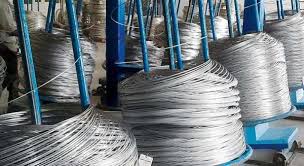It may come as a surprise to some in the jeeter live resin that an overflow filling machine can be used for some free-flowing products with smaller particulates. Overflow fillers are known in the packaging industry for creating reliable, level fills on every bottle used regardless of small inconsistencies in the internal volume of the different bottles. This is an advantage for items such as salad dressings that are sometimes packaged in clear containers in that it level fills allow for aesthetic appeal when the product reaches the shelf, rather than inconsistently filled bottles of the same product sitting side by side while on display.
Once product reaches a certain level in the bottle, the excess fluid “overflows” through a return port on the nozzle, allowing the consistent fill as well as the reuse of product, if feasible. For an overflow filler to be successful with these type of items, the particulates must be small enough to move through the nozzle without clogging either the fill port or the return port. Clogging either of these holes with built up solids will result in inconsistent fill levels and defeat the purpose of the machine. Along the same lines, the product itself must be fairly free-flowing, as a viscous or slow moving product can increase fill times, allow solids to accumulate or both.
For products with larger particulates, or for thick products such as jams and jellies that include solids, the overflow filler is more than likely not an option. Instead, a pump filling machine or a piston filler will be used to package the product. Pump filling machines will use a single pump for each individual fill head. These pumps may will often be gear or lobe type pumps, essentially trapping product and particulates in an empty space between the gears or the lobes, then transferring the two through the tubing to the waiting containers. Pump fillers work well with thicker products, but may reach a limit when the size of a solid in the product becomes too large.
Piston fillers use a cylinder and a three way valve to pull and push product into and out of the cylinder respectively. The pistons can vary in size, meaning that a large piston will allow a large cylinder to be filled with product. The piston filler solves the problem of large particulates such as fruit chunks in the jams and jellies. The large open space of the cylinder allows these larger solids to pass to the containers, realizing, of course, that the nozzles used to fill jars or other containers must also be able to accommodate these pieces. In other words, the entire product pathway, from the bulk tank to the containers, must allow the particulates to pass. The piston also allows thick products to be filled with a highly volumetric accuracy, as the volume of the cylinder will not change from cycle to cycle.
While there may be other solutions for unique packaging projects involving products with particulates, a majority of these projects will be solved by incorporating a mixer or agitator and using one of the above filling methods. As always, each project should be analyzed on a case-by-case basis to find the most efficient, cost-effective and reliable manner of packaging a product.
